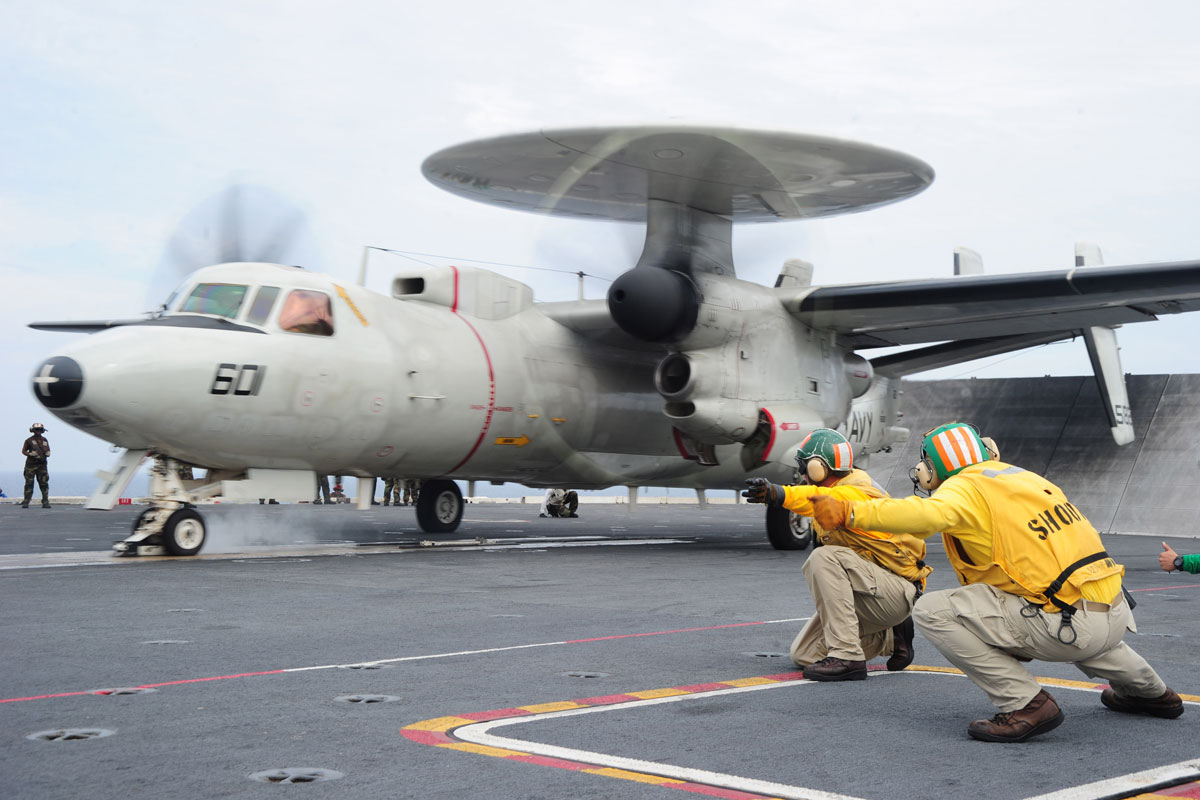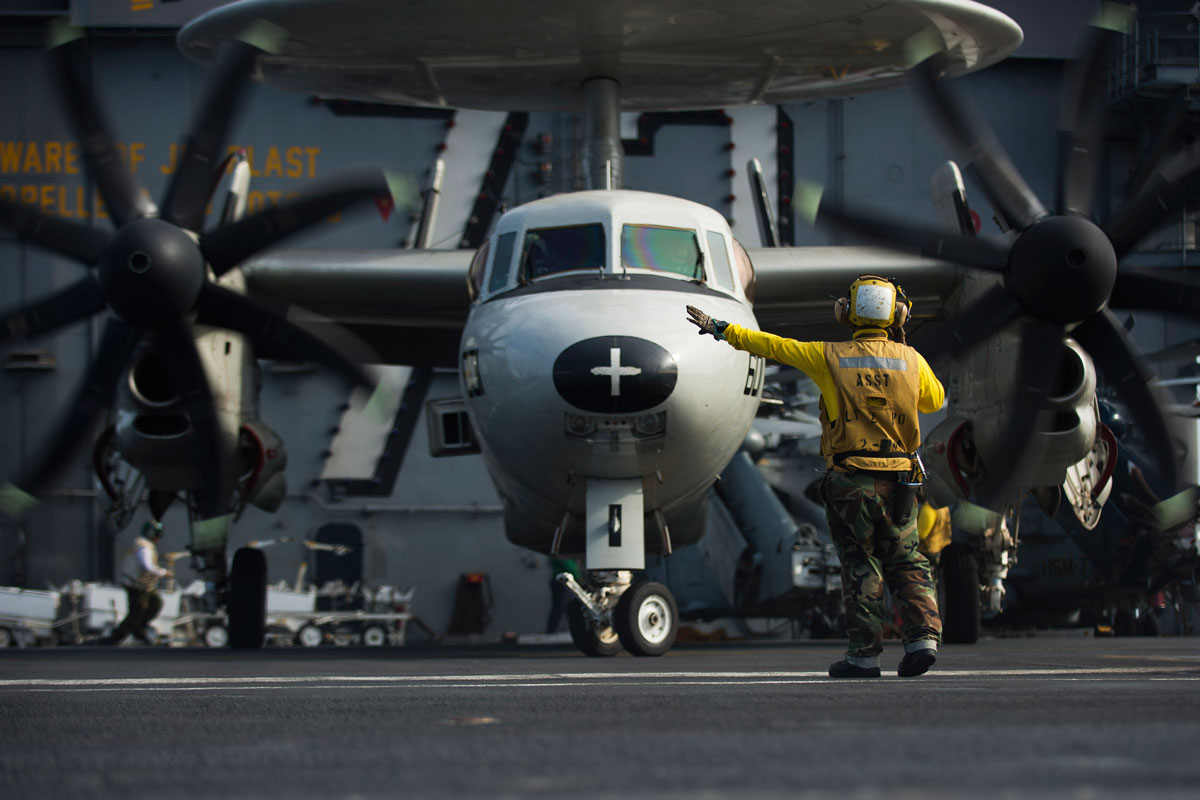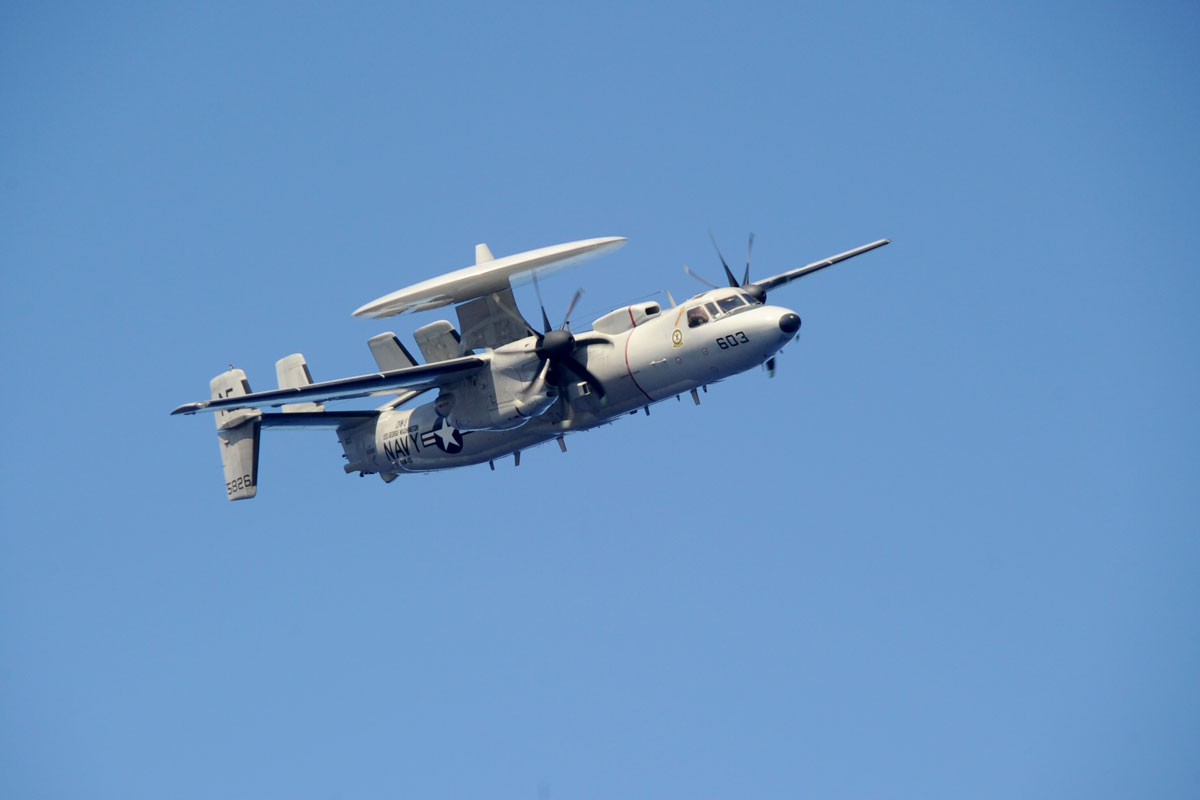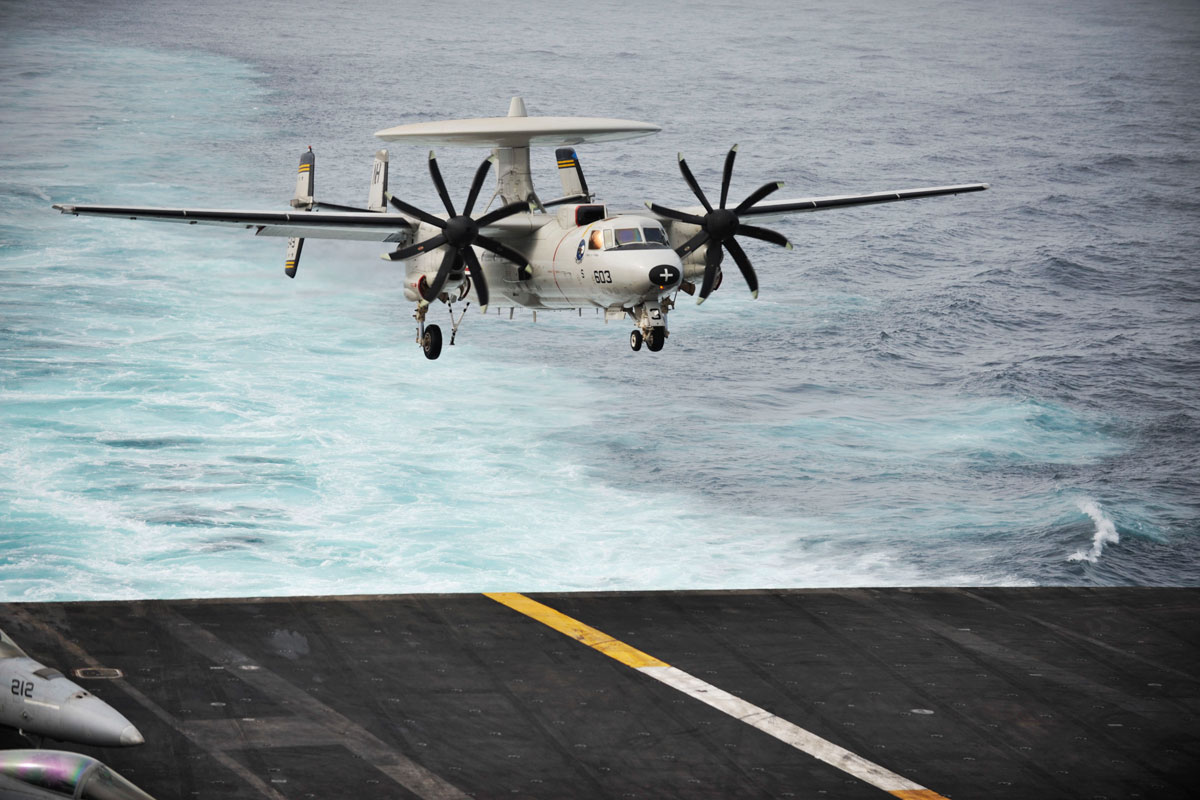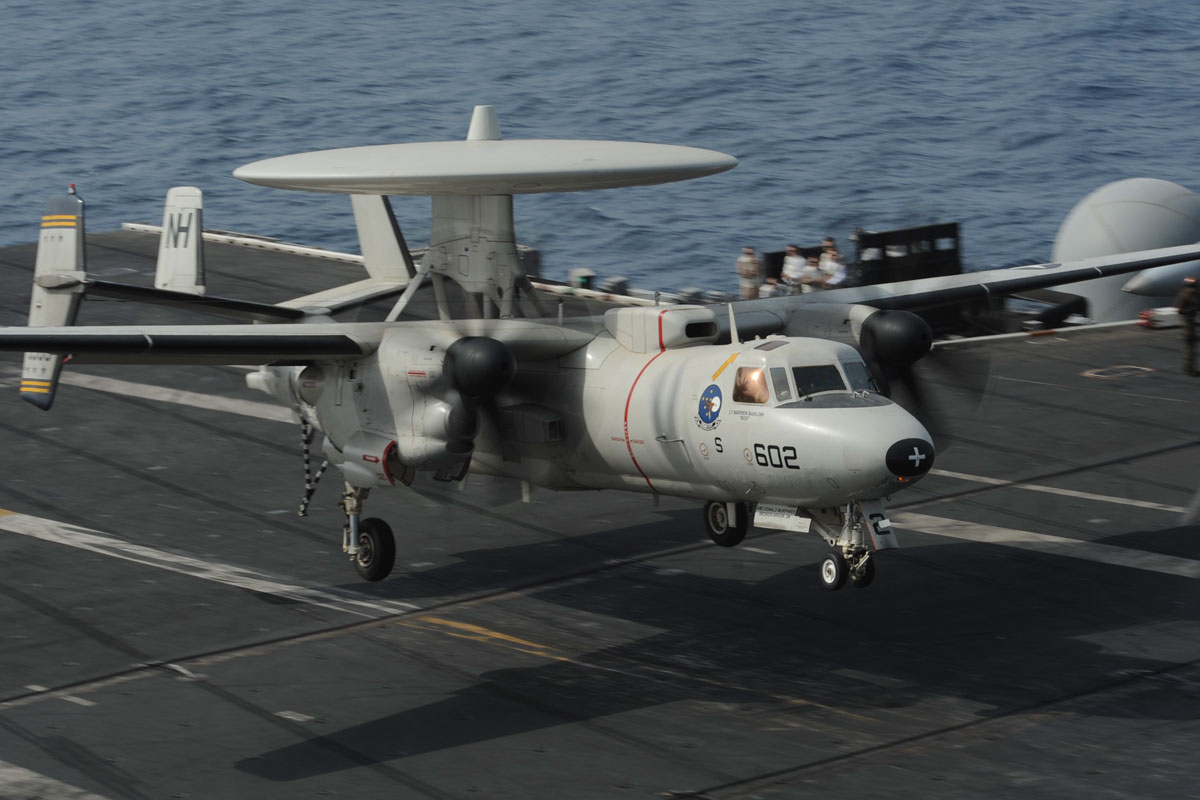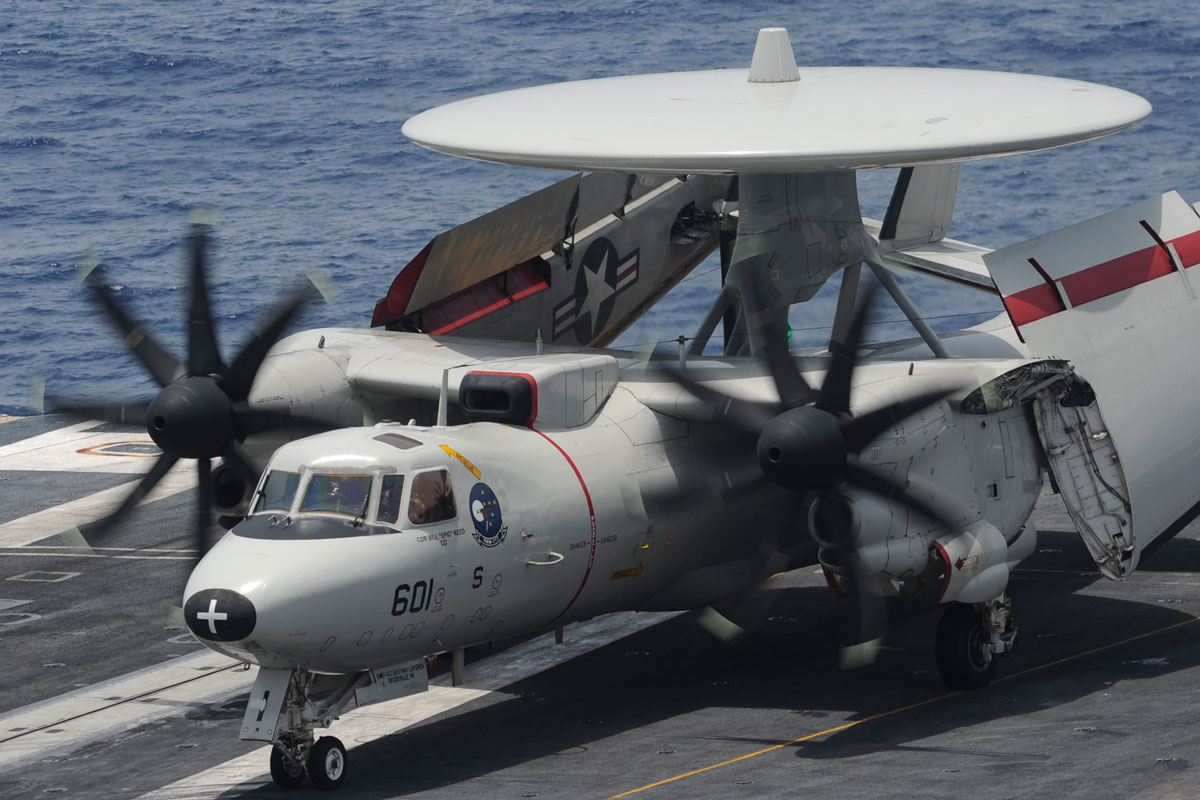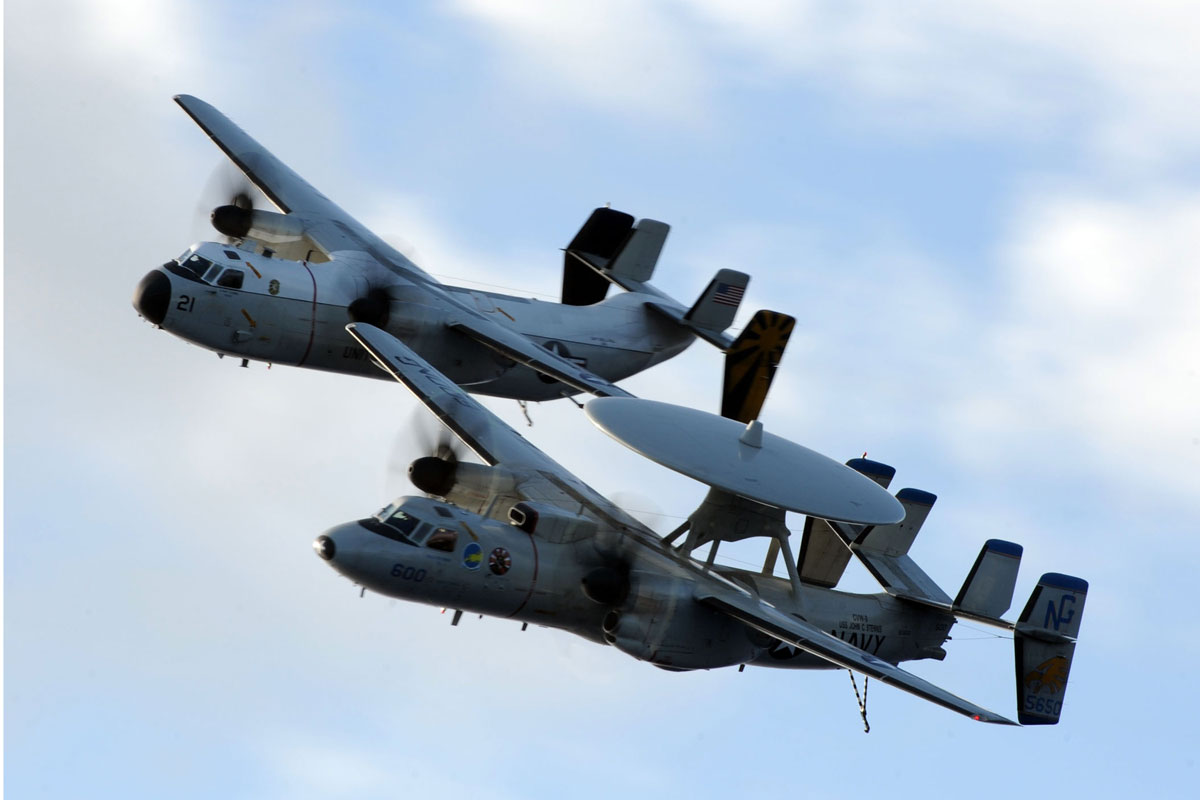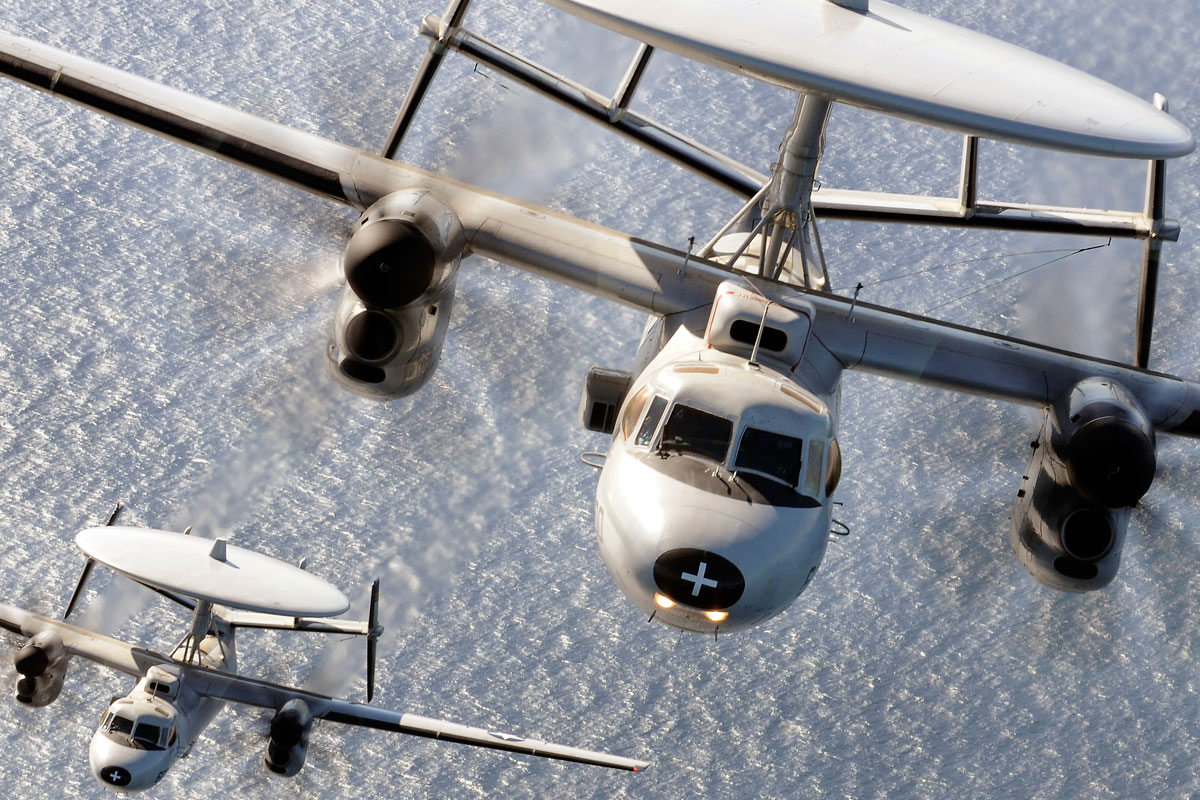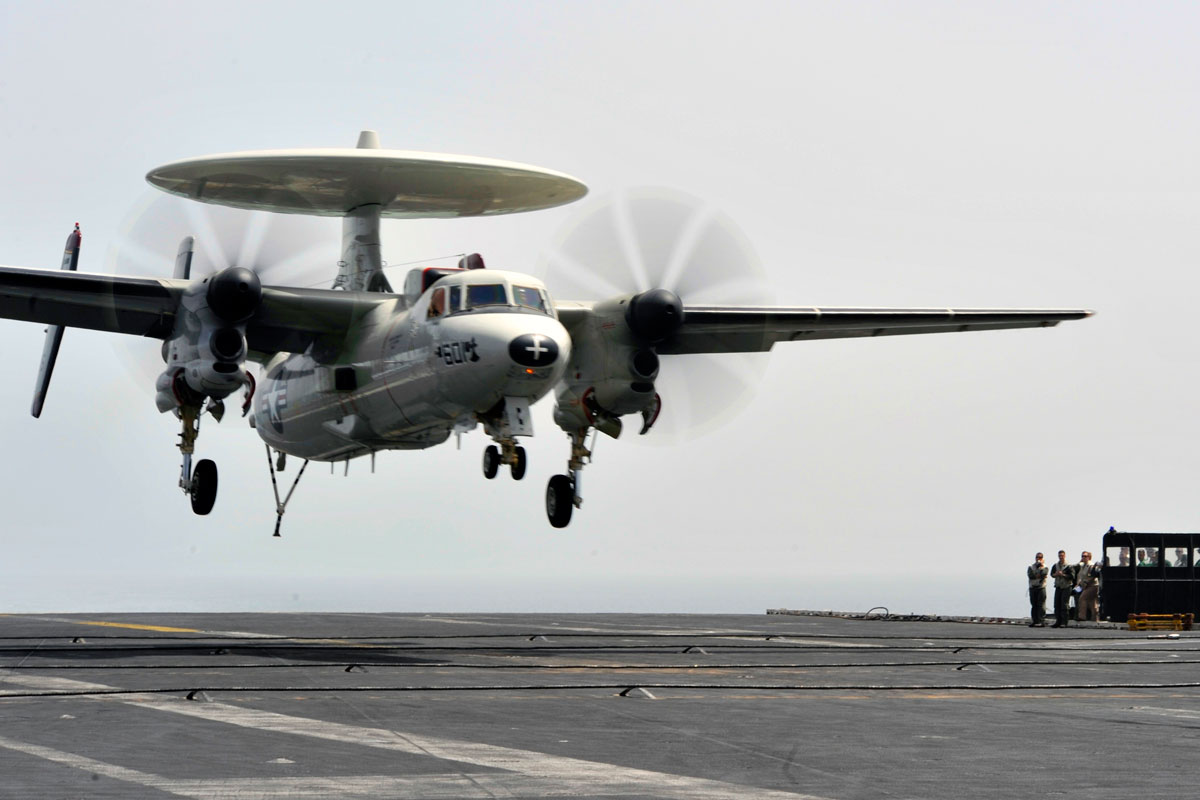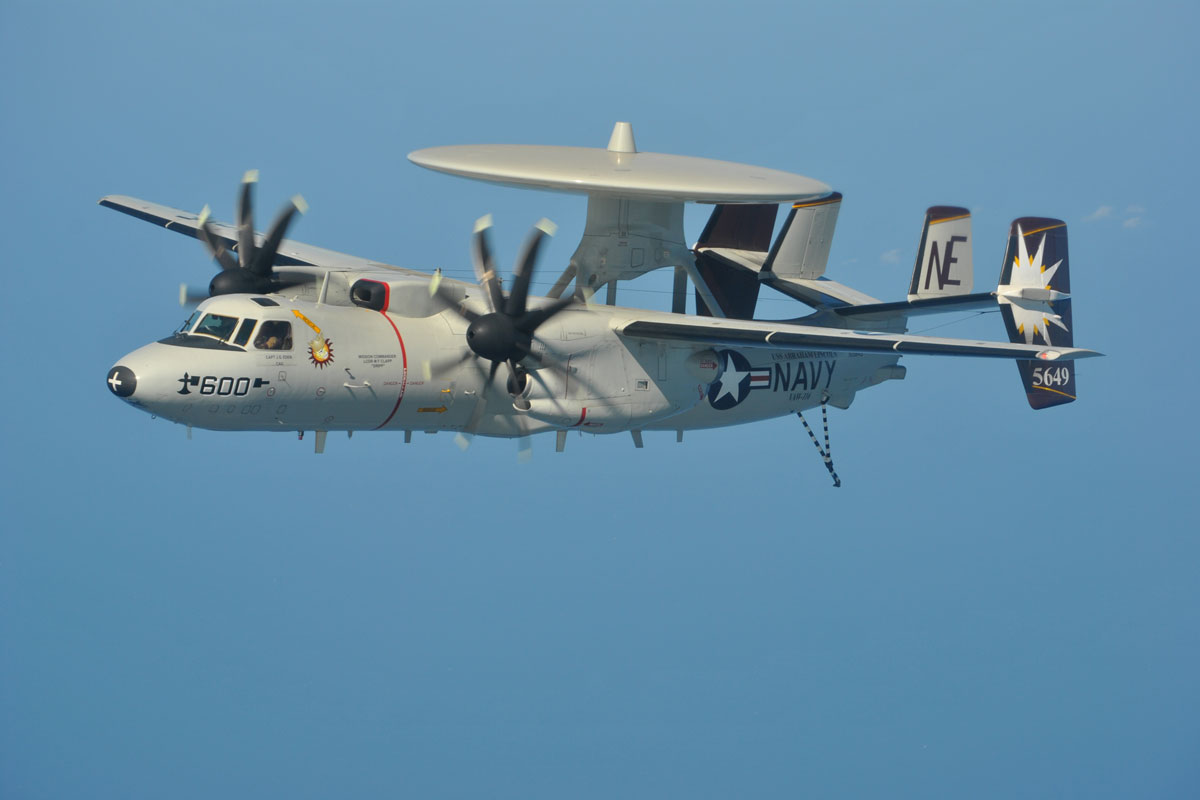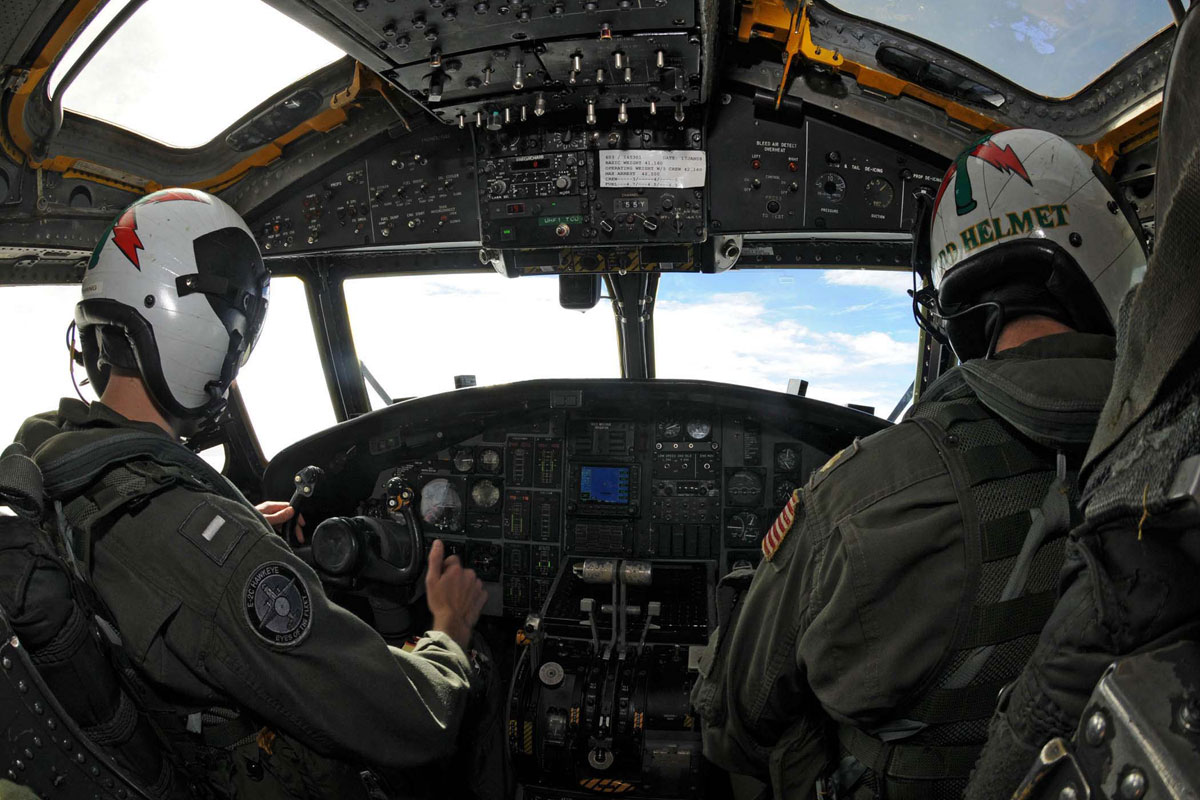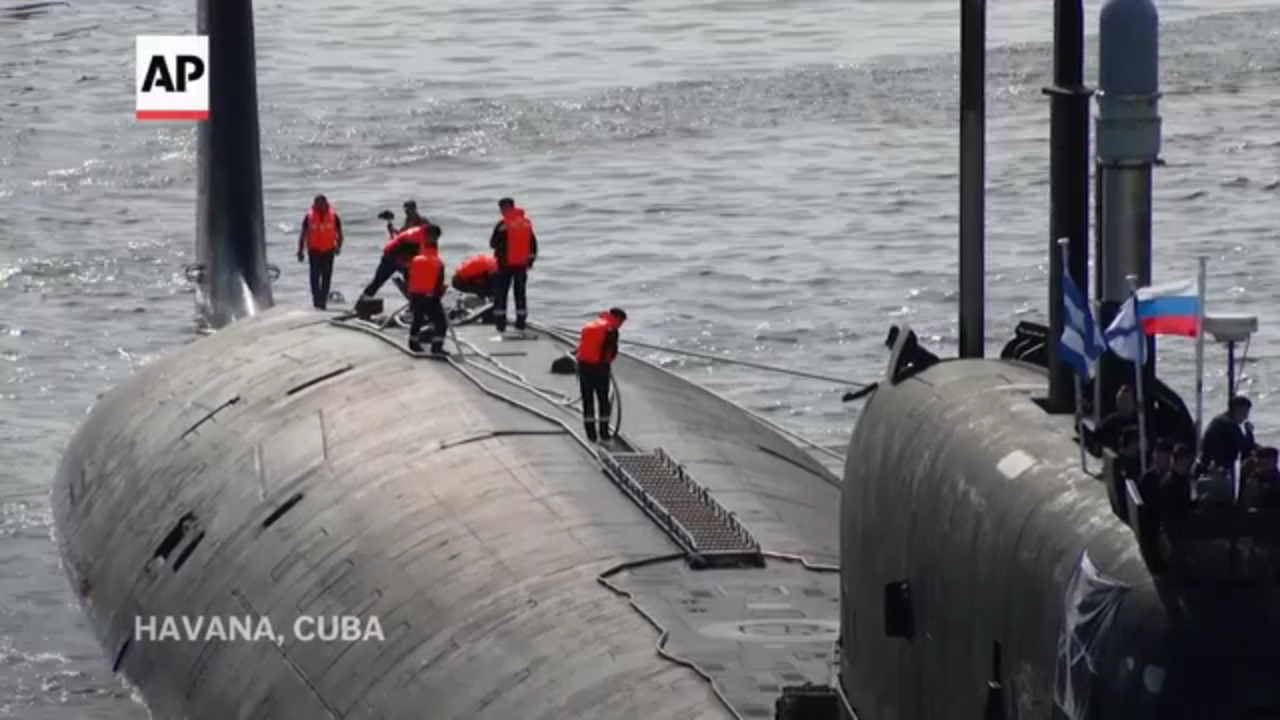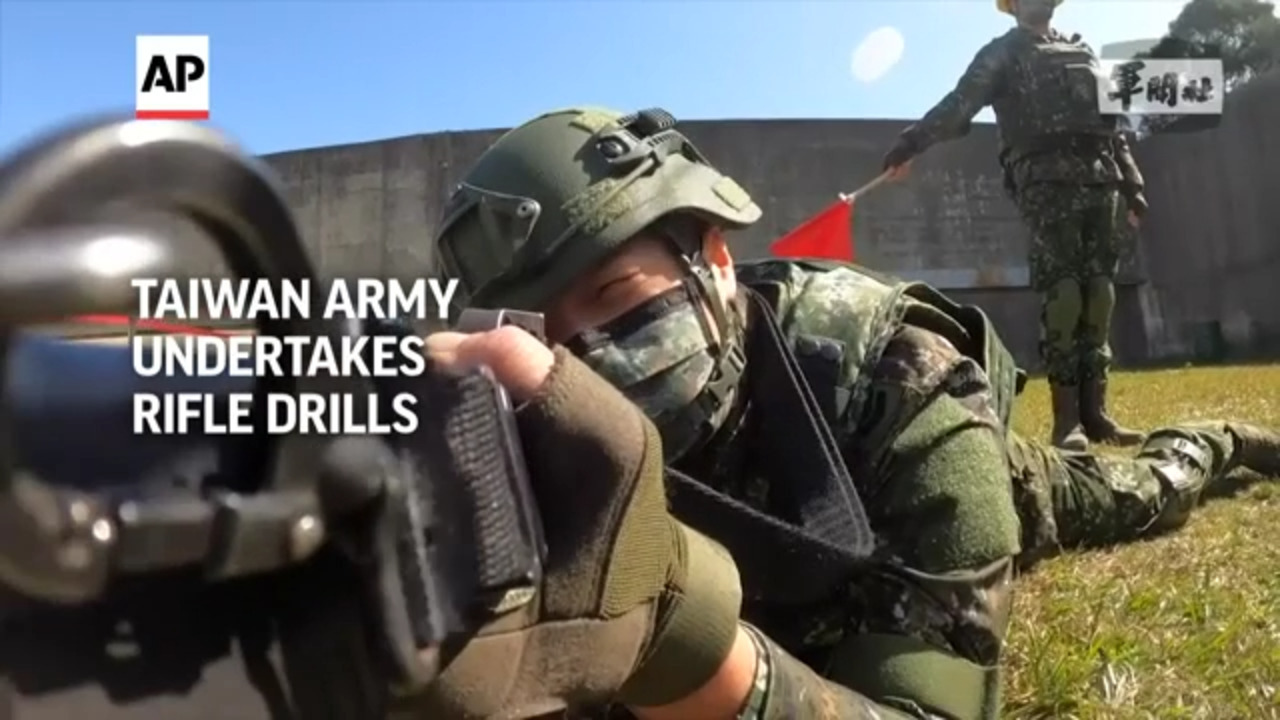The E-2C Hawkeye is the U.S. Navy’s primary carrier-based airborne early warning and command and control aircraft. The twin turboprop Hawkeye shares its basic airframe with the C-2 Greyhound but is fitted with a 24-foot rotating radome housing an APS-145 (some have the APS-139 radar).
The first aircraft to perform this mission was the Grumman E-1 Tracer (a variant of the S-2 Tracker anti-submarine aircraft), which saw service from 1954 to 1964. The E-1's successor, the E-2 Hawkeye, was the first carrier-based aircraft designed from the outset for the all-weather airborne early warning and command and control mission. Since replacing the E-1 in 1964, the Hawkeye has been the "eyes of the fleet." Since its combat debut during the Vietnam conflict, the E-2 has served the Navy around the world.
The current version of the Hawkeye, the E-2C, became operational in 1973, and surpassed one million flight hours in August 2004. The aircraft has undergone several upgrades to its active and passive sensors, engines and propellers. The newest variant of the E-2C (Hawkeye 2000) with its new mission computer, improved radar displays and Cooperative Engagement Capability (CEC), combined with the shipboard Aegis weapon system, will form the cornerstone of future sea based Theater Ballistic Missile Defense (TBMD).
Its Airborne Tactical Data System (ATDS), consisting of an auto-detection radar, airborne computers, and a memory and data link system, is tied to the Naval Tactical Data System (NTDS), located at fleet headquarters, which gives an overall picture of the tactical situation.
The E-2C’s 24-foot revolving radar dish rotates at six rpm and can be retracted two feet to facilitate stowage aboard a carrier. The lift produced by the radar dish when the plane is in flight is sufficient to offset its own weight.
The five-man crew consists of two pilots and three equipment operators. They can monitor a large number of aircraft at any given time, directing strike aircraft to assigned targets, in fair weather or foul, while maintaining a watch for hostile forces within the long range of their radar. Working as a team, the Hawkeyes surround the fleet with an early warning ring capable of directing air defenses against any enemy.
The current model operating in the Fleet, the E-2C, is equipped with radar capable of detecting targets anywhere within a three-million-cubic-mile surveillance envelope while simultaneously monitoring maritime traffic. Each E-2C also can maintain all-weather patrols, track, automatically and simultaneously, more than 600 targets, and control more than 40 airborne intercepts.
Advanced Hawkeye (AHE), the newest variant of the E-2 aircraft platform, is currently in development and scheduled to be introduced to the Fleet in 2011. Using the E-2C Hawkeye 2000 configuration as a baseline, AHE will feature a state of the art radar with a two generation leap in capability and upgraded aircraft systems that will improve supportability and increase readiness.
Key AHE program objectives include improved battle space target detection and situational awareness, support of Theater Air and Missile Defense (TAMD) operations, and improved Operational Availability. The AHE mission will be to provide advance warning of approaching enemy surface units, cruise missiles and aircraft, to vector interceptors or strike aircraft to attack, and to provide area surveillance, intercept, communications relay, search and rescue and strike and air traffic control.
